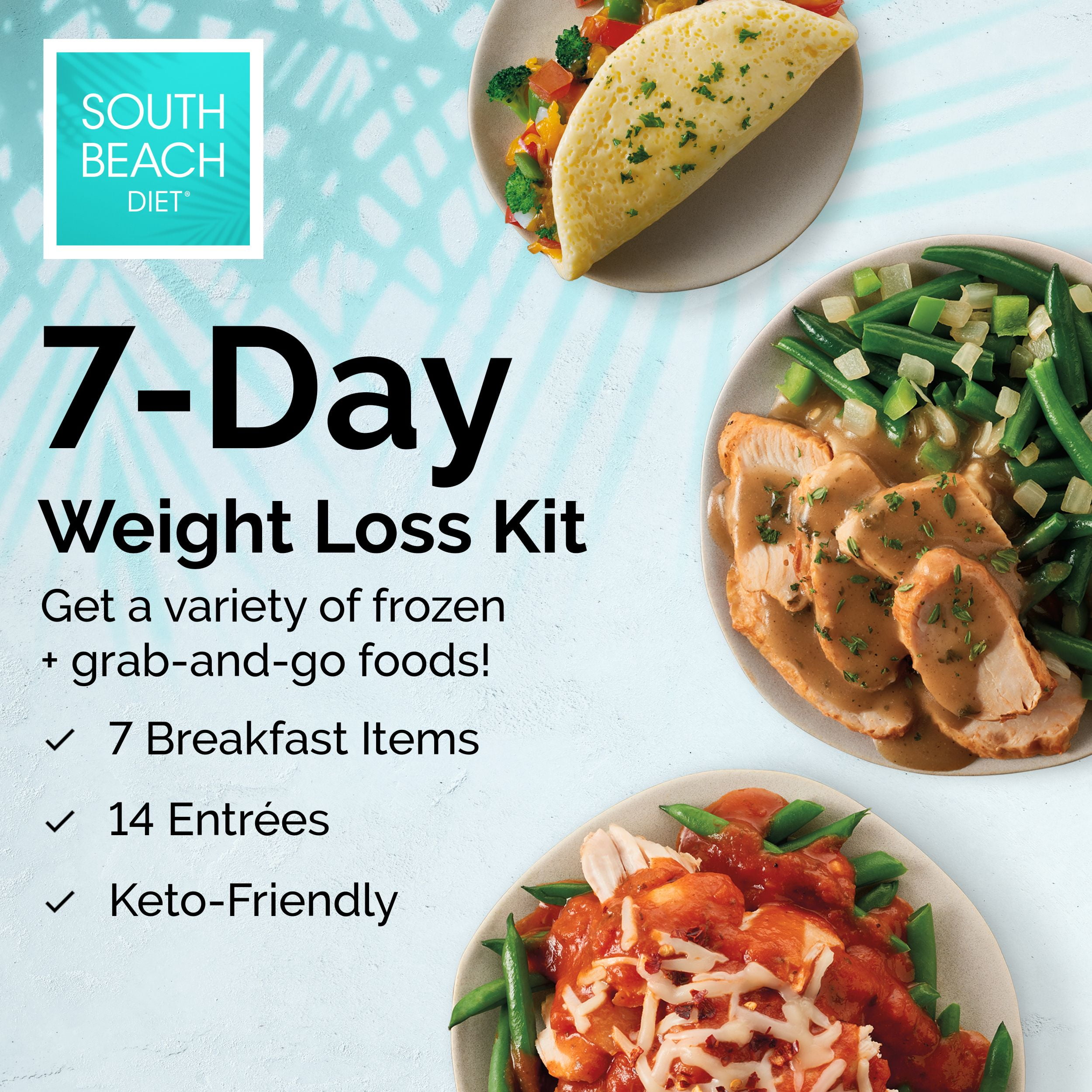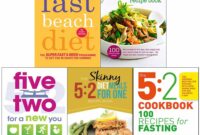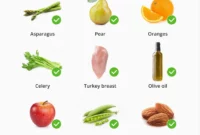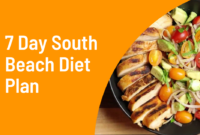Beach Diet 1 Week: This guide explores the realities of rapid weight loss plans for a beach vacation. We’ll examine common restrictions, potential risks and benefits, and debunk misleading marketing claims. Understanding the nuances of different diet approaches – low-carb, low-calorie, detox – is crucial for making informed choices. We’ll provide a sample meal plan, exercise recommendations, and guidance on hydration and supplements, all while emphasizing the importance of sustainable, long-term health strategies.
The information presented aims to offer a balanced perspective, highlighting both the potential advantages and significant drawbacks of quick weight loss methods. Remember that any drastic dietary changes should be undertaken with caution and ideally under the supervision of a healthcare professional.
Understanding the “Beach Diet 1 Week” Concept
The term “Beach Diet 1 Week” encapsulates a range of rapid weight loss strategies employed by individuals aiming to achieve a slimmer physique before a beach vacation. These diets often prioritize quick results over long-term health and sustainable weight management. Understanding the principles, risks, and potential pitfalls associated with such approaches is crucial for making informed decisions.
Rapid weight loss plans, frequently marketed for beach vacations, typically involve strict dietary restrictions. These restrictions can include severely limiting caloric intake, eliminating entire food groups (like carbohydrates or fats), or focusing heavily on specific foods deemed “detoxifying” or “cleansing.” The goal is to shed pounds quickly, often resulting in water weight loss rather than actual fat reduction.
Dietary Restrictions and Their Implications
Common restrictions in quick weight loss plans include very low-calorie diets (VLCDs), which significantly reduce daily energy intake, often below 800 calories. Low-carbohydrate diets drastically limit carbohydrate consumption, leading to ketosis, a metabolic state where the body burns fat for energy. Detox diets often promote the consumption of specific juices or cleanses, claiming to eliminate toxins from the body, a claim that lacks strong scientific evidence. These restrictive approaches can lead to nutrient deficiencies, muscle loss, and metabolic slowdown.
Potential Risks and Benefits of Rapid Weight Loss
Rapid weight loss methods, while potentially resulting in short-term weight reduction, carry significant risks. These include nutrient deficiencies, electrolyte imbalances, fatigue, dizziness, and headaches. Furthermore, the weight lost is often water weight and muscle mass, not fat, and is easily regained once normal eating patterns resume. The psychological impact can also be detrimental, leading to disordered eating patterns and a negative body image. While a small amount of weight loss might be observed quickly, the long-term benefits are minimal, and the risks significantly outweigh the advantages. Sustainable, gradual weight loss through balanced diet and exercise is far healthier and more effective.
Misleading Marketing Claims
Many “beach diets” employ misleading marketing tactics. Claims such as “lose 10 pounds in a week!” or “melt away fat with this miracle juice!” are often exaggerated and lack scientific backing. Images showcasing dramatic transformations often use deceptive editing or feature individuals with predispositions to rapid weight loss. The use of testimonials without verifying their authenticity is another common tactic. Consumers should be wary of such claims and seek evidence-based information from reputable sources before embarking on any weight loss program.
Comparison of Different “Beach Diets”
| Diet Type | Restrictions | Potential Benefits | Potential Risks |
|---|---|---|---|
| Low-Carb | Limited carbohydrate intake | Initial weight loss, increased energy (for some) | Nutrient deficiencies, constipation, fatigue, “keto flu” |
| Low-Calorie | Severely reduced caloric intake | Significant weight loss (short-term) | Nutrient deficiencies, muscle loss, metabolic slowdown, fatigue, dizziness |
| Detox | Focus on specific juices or cleanses | Improved bowel movements (potentially) | Nutrient deficiencies, dehydration, potential for harmful interactions with medications |
| Very Low-Calorie Diet (VLCD) | Extremely low caloric intake (typically under 800 calories) | Rapid weight loss | Severe nutrient deficiencies, muscle loss, metabolic slowdown, heart problems, gallstones, and other serious health risks. Should only be undertaken under strict medical supervision. |
Sample “Beach Diet 1 Week” Meal Plan
This sample meal plan provides a framework for a 1200-1500 calorie diet focusing on whole, unprocessed foods. Remember that individual caloric needs vary, and this plan should be adjusted based on your activity level and specific dietary requirements. Consult a healthcare professional or registered dietitian before starting any new diet plan. Portion sizes are approximate and can be adjusted to meet your individual needs.
This meal plan prioritizes lean protein, complex carbohydrates, and healthy fats to support energy levels and promote satiety while aiming for a calorie deficit conducive to weight loss. The recipes provided are examples and can be modified to suit personal preferences and available ingredients, while maintaining the overall nutritional profile.
Breakfast Options
This section details three breakfast options, each providing a balanced start to the day with a focus on protein and fiber to keep you feeling full and energized.
- Option 1: Overnight Oats (approx. 350 calories): 1/2 cup rolled oats, 1 cup unsweetened almond milk, 1/4 cup berries, 1 tablespoon chia seeds, 1/4 cup chopped nuts. This breakfast is high in fiber, providing sustained energy release. Macronutrient breakdown: approx. 10g protein, 50g carbohydrates, 10g fat.
- Option 2: Greek Yogurt with Fruit and Granola (approx. 300 calories): 1 cup plain nonfat Greek yogurt, 1/2 cup mixed berries, 1/4 cup granola (choose a low-sugar option). This option offers a good source of protein and calcium. Macronutrient breakdown: approx. 20g protein, 30g carbohydrates, 5g fat.
- Option 3: Scrambled Eggs with Spinach (approx. 250 calories): 2 eggs scrambled with 1 cup spinach. This provides a protein-rich start to the day with added vitamins from spinach. Macronutrient breakdown: approx. 15g protein, 5g carbohydrates, 15g fat.
Lunch Options
These lunch options emphasize lean protein and vegetables to maintain fullness and provide essential nutrients.
- Option 1: Chicken Salad Sandwich on Whole Wheat (approx. 400 calories): 4 oz grilled chicken breast, 1/4 avocado, lettuce, tomato on whole wheat bread. This provides lean protein and healthy fats. Macronutrient breakdown: approx. 30g protein, 40g carbohydrates, 10g fat.
- Option 2: Large Salad with Grilled Salmon (approx. 450 calories): 4 oz grilled salmon, mixed greens, 1/2 cup cucumber, 1/4 cup cherry tomatoes, 2 tablespoons olive oil and vinegar dressing. This offers a rich source of omega-3 fatty acids and protein. Macronutrient breakdown: approx. 35g protein, 20g carbohydrates, 20g fat.
- Option 3: Lentil Soup with Whole Wheat Bread (approx. 350 calories): 1.5 cups lentil soup (low sodium), 1 slice whole wheat bread. This provides fiber and plant-based protein. Macronutrient breakdown: approx. 15g protein, 50g carbohydrates, 5g fat.
Dinner Options
Dinner options focus on lean protein sources and plenty of vegetables.
- Option 1: Baked Chicken Breast with Roasted Vegetables (approx. 400 calories): 4 oz baked chicken breast, 1 cup roasted vegetables (broccoli, carrots, peppers). This meal is high in protein and vitamins. Macronutrient breakdown: approx. 30g protein, 25g carbohydrates, 10g fat.
- Option 2: Shrimp Scampi with Zucchini Noodles (approx. 350 calories): 4 oz shrimp scampi (made with light sauce), 1 cup zucchini noodles. This provides lean protein and low-carbohydrate alternative to pasta. Macronutrient breakdown: approx. 25g protein, 15g carbohydrates, 15g fat.
- Option 3: Turkey Meatloaf with Sweet Potato (approx. 450 calories): 4 oz turkey meatloaf (low-sodium), 1 medium baked sweet potato. This offers a good source of protein and complex carbohydrates. Macronutrient breakdown: approx. 35g protein, 40g carbohydrates, 10g fat.
Sample Daily Schedule
This is a sample schedule; adjust timings to fit your lifestyle.
| Time | Meal | Calories (approx.) |
|---|---|---|
| 7:00 AM | Breakfast (choose one option) | 300-350 |
| 12:00 PM | Lunch (choose one option) | 400-450 |
| 6:00 PM | Dinner (choose one option) | 400-450 |
Exercise Recommendations for a “Beach Body”
Achieving a “beach body” isn’t solely about diet; incorporating a regular exercise routine is crucial for building strength, improving cardiovascular health, and toning muscles. This routine focuses on a balanced approach combining cardio and strength training, adaptable to various fitness levels. Remember to consult your physician before starting any new workout program.
A well-rounded fitness plan combines cardiovascular exercise to improve heart health and burn calories, with strength training to build lean muscle mass and increase metabolism. This results in a more toned and defined physique. The following sample routine provides a good starting point, focusing on exercises easily modifiable for different fitness levels.
Beginner Workout Routine
This routine is designed for beginners and can be performed 3 times a week, with rest days in between. Each exercise should be performed for 10-12 repetitions for 2-3 sets. Rest for 60 seconds between sets.
Warm-up (5 minutes): Light cardio, such as jogging in place, jumping jacks, or arm circles.
Strength Training:
- Squats: Works legs and glutes. Stand with feet shoulder-width apart, lower your hips as if sitting in a chair, keeping your back straight. Benefits include increased lower body strength and improved balance.
- Push-ups (modified on knees if needed): Works chest, shoulders, and triceps. Begin in a plank position, lower your chest towards the floor, and push back up. Benefits include increased upper body strength and improved posture.
- Lunges: Works legs and glutes. Step forward with one leg, bending both knees to 90 degrees. Benefits include improved leg strength, balance, and coordination.
- Plank: Works core muscles. Hold a push-up position, supporting your weight on your forearms and toes, keeping your body in a straight line. Benefits include increased core strength and improved stability.
- Rows (using resistance bands or light dumbbells): Works back muscles. Sit with feet flat on the floor, hold the resistance band or dumbbells, and pull them towards your chest, keeping your back straight. Benefits include improved posture and upper body strength.
Cardio (20-30 minutes): Choose from the list below, maintaining a moderate intensity.
Cool-down (5 minutes): Static stretches, holding each stretch for 30 seconds. Examples include hamstring stretches, quad stretches, and tricep stretches.
Modifying the Workout for Different Fitness Levels
This routine can be easily modified to suit different fitness levels. Beginners can reduce the number of sets or repetitions, increase rest time between sets, or modify exercises to make them less challenging (e.g., performing push-ups against a wall instead of on the floor). More advanced individuals can increase the number of sets and repetitions, decrease rest time, add weight (dumbbells, resistance bands), or incorporate more challenging variations of the exercises. Progressing gradually is key to avoiding injury and maintaining motivation.
Beach-Friendly Cardio Exercises
The beach offers a fantastic setting for a variety of cardio exercises. The uneven terrain adds an extra challenge, engaging more muscle groups.
Here are five cardio exercises perfect for the beach:
- Beach running: Running on sand provides a greater resistance workout compared to running on a flat surface.
- Swimming: A full-body workout that’s low-impact and highly effective.
- Jumping jacks on the sand: The soft sand adds resistance and challenges your balance.
- Walking lunges on the beach: The uneven terrain increases the challenge of this exercise.
- Side shuffles in the sand: This works your legs and core, providing a good lateral movement workout.
Visual Representation of a Healthy Beach Diet
A healthy beach diet, as outlined in the sample meal plan, is visually appealing and emphasizes vibrant colors, diverse textures, and balanced portion sizes. It’s far from a restrictive, bland diet; instead, it focuses on nutrient-rich foods that satisfy both your hunger and your aesthetic goals.
The visual appeal of a healthy meal from the sample plan is striking. Imagine a plate brimming with color: the deep red of sliced bell peppers contrasting with the bright green of spinach and the sunny yellow of grilled pineapple. The textures are equally varied – the satisfying crunch of a mixed green salad, the soft chew of grilled chicken or fish, the subtle creaminess of avocado. Portions are moderate, not overly large, emphasizing quality over quantity. A typical meal might showcase a lean protein source (such as grilled fish or chicken breast), a generous serving of colorful vegetables, and a smaller portion of a complex carbohydrate, such as quinoa or brown rice. A small, healthy fat source, like a handful of almonds or a small dollop of olive oil, completes the picture.
Visual Appearance of a Healthy Individual
An individual who has consistently followed a balanced beach diet and regular exercise plan exhibits a distinct visual profile. Their skin tone is healthy and radiant, reflecting proper hydration and nutrient intake. They possess a lean, toned physique, showcasing visible muscle definition without excessive bulk. Their body fat percentage is low, indicating a healthy body composition. Their posture is generally upright and confident, suggesting improved strength and flexibility from the exercise regimen. Their overall appearance communicates vitality and well-being, a far cry from the gaunt or overly muscular look sometimes associated with extreme dieting. The individual radiates energy and confidence, a testament to the holistic approach of combining healthy eating with regular physical activity. They appear strong and fit, but importantly, also healthy and vibrant.
Final Review
Achieving a “beach body” is less about a quick fix and more about cultivating healthy habits. While a Beach Diet 1 Week plan can offer short-term results, long-term success hinges on sustainable lifestyle changes. Prioritizing whole foods, regular exercise, and adequate hydration forms the cornerstone of a healthy journey. Remember that gradual, consistent progress is far more rewarding and beneficial than any temporary transformation.




